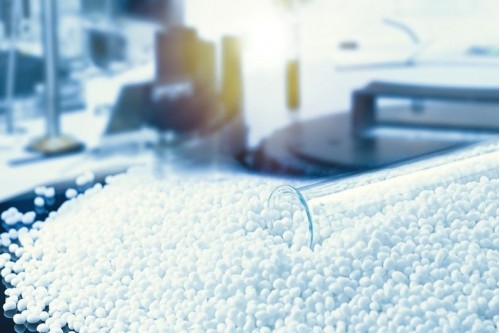Tin tức
Thị trường PP, PE nội địa trên toàn Đông Nam Á chịu tác động mạnh từ nhu cầu yếu
06
/06
/2022
Thị trường PP và PE trong nước ở Đông Nam Á đã đi xuống trong hai tháng qua, do nhu cầu liên tục yếu, mặc dù đồng đô la Mỹ tăng giá tiếp tục làm mất tính cạnh tranh của hàng nhập khẩu vào khu vực này.
Đồng đô la Mỹ mạnh khiến PP, PE châu Á mất tính cạnh tranh
31
/05
/2022
Các nhà kinh doanh cho biết sự tăng vọt của đồng USD so với các loại tiền tệ toàn cầu đã khiến PP và PE nhập khẩu mất tính cạnh tranh so với các sản phẩm bán trong nước trên khắp Trung Quốc, Đông Nam Á và Ấn Độ vì chi phí nhập khẩu gia tăng.
Đợt tăng giá tháng 5 của người bán PS được chấp nhận một phần ở châu Âu
23
/05
/2022
Sự gia tăng chi phí đã khuyến khích người bán PS ở châu Âu thông báo về đợt tăng giá mới trong tháng 5. Cao hơn 50-90 EUR/tấn so với giá tháng 4, giá PS đạt mức cao kỷ lục mới nhưng xu hướng tăng giá đã mất đà. Trong khi các mức tăng nhỏ hơn khoảng 50-60 EUR/t�...
Thị trường PP, PE của châu Âu bị ảnh hưởng bởi những yếu tố cơ bản yếu và đà giảm giá sâu hơn trong thời gian tới
30
/06
/2022
Sau khi chốt các giao dịch tháng 6 với mức giảm 3 con số, những người tham gia thị trường PP và PE của châu Âu đang chuẩn bị cho các đợt giảm giá sâu hơn vào tháng sau do nguồn cung dồi dào và nhu cầu yếu. Monomer cũng được dự báo đi xuống do chênh lệch ngày c...
Nhật Bản chế tạo nhựa có khả năng tự hàn gắn ở nhiệt độ phòng
25
/04
/2022
Giáo sư hóa học Takuzo Aida và các đồng nghiệp đã sử dụng một chất có tên gọi polyether thiourea để tạo ra vật liệu nhựa có thể tự hàn gắn nếu các mảnh vỡ được ghép lại với nhau ở nhiệt độ phòng.
Vượt bão đại dịch, ngành nhựa khởi sắc
08
/04
/2022
Vượt lên khó khăn, ngành nhựa cho thấy nhiều dấu hiệu hồi phục, duy trì hoạt động kinh doanh và đạt được nhiều thành tựu ấn tượng.
Thống kê: Nhập khẩu PE quý 1 của Trung Quốc phục hồi từ mức thấp nhất trong 4 năm qua
18
/05
/2022
Dữ liệu từ Thống kê Nhập khẩu ChemOrbis cho thấy nhập khẩu PE tích lũy của Trung Quốc trong quý đầu tiên của năm 2022 đã tăng 7,3% so với trước đó, đạt khoảng 3,5 triệu tấn. Khối lượng quý 4 năm 2021 cho thấy con số hàng quý thấp nhất trong thống kê nhập k...
Sự tái xuất hiện của các lô PP, PE của Nga làm suy yếu tâm lý ở Việt Nam
22
/04
/2022
Thị trường PP và PE nhập khẩu của Việt Nam đã đi lên trong tuần cuối cùng của tháng 3, nhờ sự hỗ trợ từ chi phí cao. Điều này bất chấp nhu cầu vẫn tiếp tục suy yếu cũng như áp lực hiện tại từ hàng tái xuất khẩu từ Trung Quốc. Tuy nhiên, tâm lý đã ch...
Doanh nghiệp nhựa lao đao vì giá nguyên liệu tăng cao, 'ông lớn' tranh thủ giành thêm thị phần
09
/07
/2021










